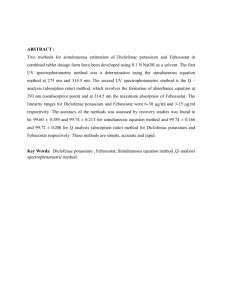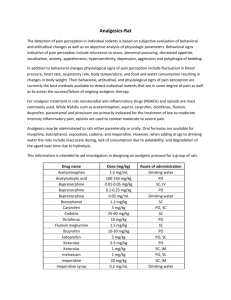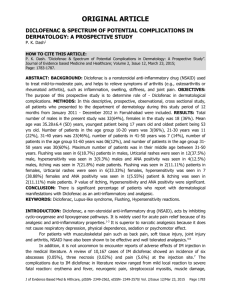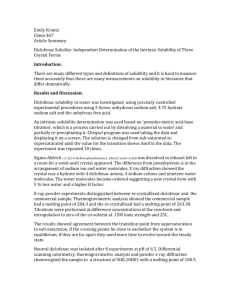Diclofenac T ratiopharm 50 mg film
advertisement
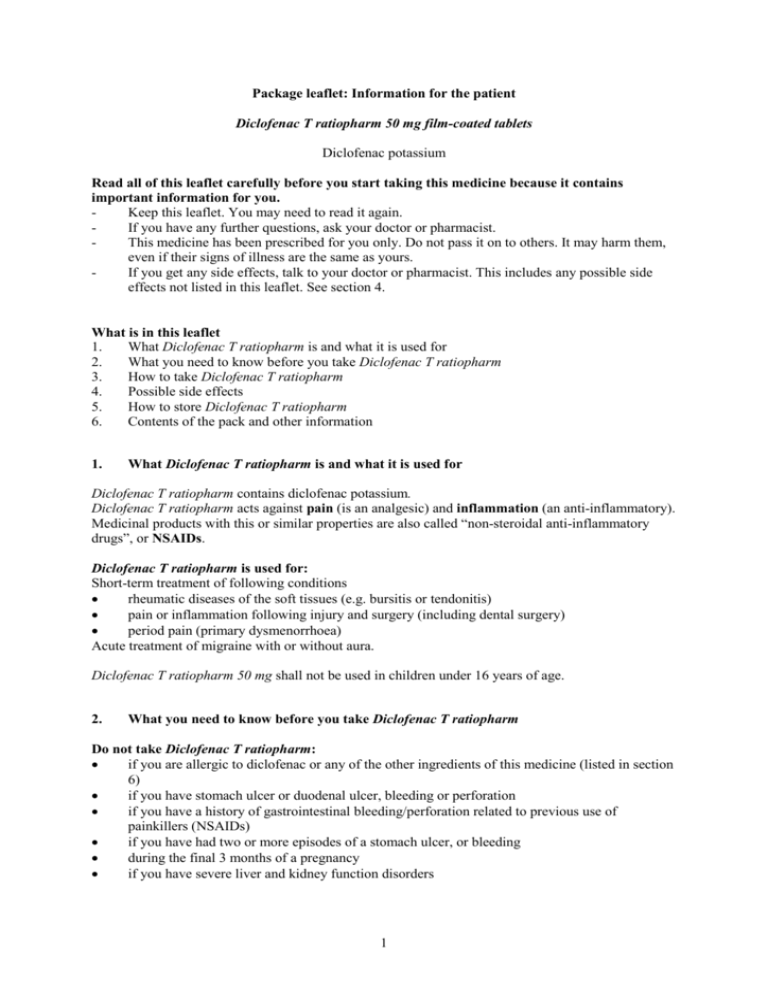
Package leaflet: Information for the patient Diclofenac T ratiopharm 50 mg film-coated tablets Diclofenac potassium Read all of this leaflet carefully before you start taking this medicine because it contains important information for you. Keep this leaflet. You may need to read it again. If you have any further questions, ask your doctor or pharmacist. This medicine has been prescribed for you only. Do not pass it on to others. It may harm them, even if their signs of illness are the same as yours. If you get any side effects, talk to your doctor or pharmacist. This includes any possible side effects not listed in this leaflet. See section 4. What is in this leaflet 1. What Diclofenac T ratiopharm is and what it is used for 2. What you need to know before you take Diclofenac T ratiopharm 3. How to take Diclofenac T ratiopharm 4. Possible side effects 5. How to store Diclofenac T ratiopharm 6. Contents of the pack and other information 1. What Diclofenac T ratiopharm is and what it is used for Diclofenac T ratiopharm contains diclofenac potassium. Diclofenac T ratiopharm acts against pain (is an analgesic) and inflammation (an anti-inflammatory). Medicinal products with this or similar properties are also called “non-steroidal anti-inflammatory drugs”, or NSAIDs. Diclofenac T ratiopharm is used for: Short-term treatment of following conditions rheumatic diseases of the soft tissues (e.g. bursitis or tendonitis) pain or inflammation following injury and surgery (including dental surgery) period pain (primary dysmenorrhoea) Acute treatment of migraine with or without aura. Diclofenac T ratiopharm 50 mg shall not be used in children under 16 years of age. 2. What you need to know before you take Diclofenac T ratiopharm Do not take Diclofenac T ratiopharm: if you are allergic to diclofenac or any of the other ingredients of this medicine (listed in section 6) if you have stomach ulcer or duodenal ulcer, bleeding or perforation if you have a history of gastrointestinal bleeding/perforation related to previous use of painkillers (NSAIDs) if you have had two or more episodes of a stomach ulcer, or bleeding during the final 3 months of a pregnancy if you have severe liver and kidney function disorders 1 if you have established heart disease and/or cerebrovascular disease e.g. if you have had a heart attack, stroke, mini-stroke (TIA) or blockages to blood vessels to the heart or brain or an operation to clear or bypass blockages if you have or have had problems with your blood circulation (peripheral arterial disease) if you have hepatic porphyria (a particular haemoglobin formation disorder) if you have haematopoetic disorders and bleeding diathesis if you previously have had an allergic reaction such as asthma, sneezing or a rash on taking painkillers containing acetylsalicylic acid or other drugs for pain/inflammation within the group of NSAIDs Warnings and precautions Talk to your doctor or pharmacist before taking Diclofenac T ratiopharm if you suffer from bronchial asthma (respiratory tract disease with respiratory distress), seasonal allergic rhinitis, swelling of the nasal mucosa, chronic pulmonary diseases or infections of the respiratory tract if you have a blood coagulation disorder if you have a kidney function disorder if you have substantial fluid floss (e.g. before or after major surgery) if you have a liver function disorder if you have ulcerative colitis or Crohn's disease (a particular bowel disease) if you are at risk of infection if you smoke if you have diabetes if you have angina, blood clots, high blood pressure, raised cholesterol or raised triglycerides Side effects may be minimised by using the lowest effective dose for the shortest time necessary to control the symptoms. Prolonged use of any type of painkiller for headaches can make them worse. If this situation is experienced or suspected, medical advice should be obtained and treatment should be discontinued. Laboratory tests When taking Diclofenac T ratiopharm for a long period of time your doctor will regularly check your liver values, your kidney function and your blood count. Bleeding of the gastrointestinal tract, ulcers and perforation Treatment with any non-steroidal anti-inflammatory drug (NSAID) can cause bleeding of the gastrointestinal tract, ulcers and perforation, possibly with a fatal outcome. The risk of becoming ill is higher the higher the dose of NSAID in patients who have already had ulcers, particularly if they have involved bleeding or perforation in elderly patients If you have one of these risk factors and/or if you are additionally being treated with low-dose acetylsalicylic acid (ASA) as an anticoagulant other drugs that raise the risk of gastrointestinal disease your doctor may possibly prescribe a gastroprotective drug in addition. If you have previously had gastrointestinal side effects you should report any unusual abdominal symptoms to your doctor. This particularly applies to bleeding from the stomach or bowels. Such bleeding is recognisable by the vomit or stool being coloured black. The elderly are particularly at risk. If you have gastrointestinal bleeding or ulcers while taking Diclofenac T ratiopharm the treatment must be discontinued. 2 Effects on the cardiovascular and cerebrovascular system Medicinal products like Diclofenac T ratiopharm are possibly related to a slightly increased risk of heart attack (cardiac infarct) or stroke. The risk is greater with high doses and longer periods of treatment. Do not exceed the recommended dose or period of treatment. Skin reactions There have very rarely been reports of serious skin reactions, when taking an NSAID, involving erythema and blistering, sometimes with a fatal outcome. At the first signs of a disorder affecting the skin or mucous membranes you should discontinue taking Diclofenac T ratiopharm and inform your doctor without delay. This also applies to other signs of a sensitivity reaction (see also section 4.). Elderly patients Side effects appear more frequently in elderly or frail elderly patients taking NSAIDs. Bleeding and perforation of the gastric and intestinal regions are the effects particularly concerned, which in some circumstances can be life-threatening. Children and adolescents Diclofenac T ratiopharm 50 mg shall not be used in children under 16 years of age. Other medicines and Diclofenac T ratiopharm Tell your doctor or pharmacist if you are taking/using, have recently taken/used or might take/use any other medicines. You should avoid taking Diclofenac T ratiopharm at the same time as: other anti-inflammatory and analgesic medicines from the non-steroidal anti-inflammatory drug group (NSAIDs) COX-2 inhibitors (also anti-inflammatory substances) glucocorticosteroids (anti-inflammatory drugs). Your doctor will decide this on a case to case basis. Particular caution is required when taking Diclofenac T ratiopharm with: digoxin (a medicine for increasing the strength and vigour of the heart) lithium (a medicine for treating mental/emotional disorders) medicines acting against water retention (diuretics) medicines for increasing the potassium levels in the blood antihypertensives including beta-blockers, ACE inhibitors and angiotensin-II receptor antagonists (likewise medicines for treating cardiac insufficiency and lowering blood pressure) certain medicines for depression (selective serotonin reuptake inhibitors/SSRI) methotrexate (another rheumatism medicine) anticoagulant medicines such as warfarin (to prevent blood clots) cyclosporine (inhibits the body's immune defences) medicines lowering blood sugar levels (antidiabetic drugs). quinolone antibiotics (a medicine to treat bacterial infections) colestipol/cholestyramine (lipid-lowering drug) phenytoin (a medicine used to treat seizures) voriconazole (a medicine used to treat fungal infection) sulfinpyrazone (a medicine used to treat gout). Pregnancy You must not take Diclofenac T ratiopharm in the last three months of a pregnancy. It represents a danger for the health of the mother and the child. In the 1st and 2nd trimesters of pregnancy you should only take Diclofenac T ratiopharm after consultation with your doctor. Breast-feeding 3 The active substance, diclofenac, passes in small quantities into the maternal milk. Therefore Diclofenac T ratiopharm should not be administered during breast-feeding. Female fertility Like other medicinal products that inhibit prostaglandin synthesis (the formation of certain tissue hormones) Diclofenac T ratiopharm may make it more difficult to become pregnant. You should inform your doctor if you plan to become pregnant or have had problems becoming pregnant. Driving and using machines Diclofenac T ratiopharm can induce side effects such as visual disturbances, vertigo, dizziness and drowsiness. As a result your capacity to react may be altered and your ability to drive and use machines can be impaired. Diclofenac T ratiopharm contains lactose If you have been told by your doctor that you have an intolerance to some sugars, contact your doctor before taking this medicinal product. 3. How TO take Diclofenac T ratiopharm Always take this medicine exactly as your doctor or pharmacist has told you. Check with your doctor or pharmacist if you are not sure. Method of administration Take Diclofenac T ratiopharm without chewing and with a small amount of fluid preferably before a meal. Duration of use The doctor treating you will decide the duration of use. The recommended dose for adults and adolescents over 16 years is The starting dose is generally 2-3 tablets of Diclofenac T ratiopharm 50 mg per day. In milder cases a dose of 1-2 tablets of Diclofenac T ratiopharm 50 mg per day is usually sufficient. The daily dose should be taken in two or three separate doses. Period pain: 1-3 tablets of Diclofenac T ratiopharm 50 mg per day taken in one to three doses. The dose should be adapted to the individual case. A lower dose (1-2 tablets per day) should be taken at the start which may be increased in stages from period to period. The treatment begins when the first symptoms of pain occur and continues for a few days depending on the intensity of the pain. Migraine: Take 1 tablet Diclofenac T ratiopharm 50 mg at the first signs of an attack. In cases where pain relief in the 2 hours after the first tablet is not sufficient a further tablet can be taken. If necessary additional Diclofenac T ratiopharm 50 mg tablets can be taken at 4 to 6 hour intervals. Do not take more than 4 tablets Diclofenac T ratiopharm 50 mg per day! Use in children and adolescents: Diclofenac T ratiopharm 50 mg shall not be used in children younger than 16 years of age. If you take more Diclofenac T ratiopharm than you should If an overdose with Diclofenac T ratiopharm is suspected, please inform your doctor immediately. If you forget to take Diclofenac T ratiopharm Do not take a double dose to make up for a forgotten dose but continue the treatment with the next dose. 4 If you have any further questions on the use of this medicine, ask your doctor or pharmacist. 4. Possible side effects Like all medicines, this medicine can cause side effects, although not everybody gets them. Side effects of medicines are as a rule dose-dependent and differ from patient to patient. The risk particularly of gastrointestinal bleeding (ulcers, damage to the mucosa, inflammation of the gastric mucosa) depends on the dose range and period of use. For evaluating side effects the following degrees of frequency have been established: Serious side effects and countermeasures You must discontinue taking Diclofenac T ratiopharm if the following side effects appear and immediately consult a doctor: Increased heart rate, a fall in blood pressure leading to shock (signs of severe hypersensitivity reactions.) This can occur when taking for the first time, but it is rare. Swelling of the face, lips, mouth, tongue or throat which may cause difficulty in swallowing or breathing (angiooedema). This is very rare. Severe skin reactions, including blistering, red or purple marks or peeling of the skin. It can also affect the mouth, eyes and other mucous membranes. (Stevens-Johnson syndrome, toxic epidermal necrolysis or Erythema multiforme).This is very rare. Severe pain in the upper abdomen, vomiting, vomiting of blood, diarrhoea with blood in it and faeces coloured black (signs of gastric/intestinal bleeding or ulcers). This is rare. Superficial lesions in the mouth, fever, sore throat, nose bleed and bruising, influenza-like symptoms, severe exhaustion (signs of disturbance to blood formation, reduction in the number of different types of some blood cells). This is very rare. Do not take any analgesics or medicines to lower the fever. Severe headache, nausea, vomiting, fever, stiffness of the neck or clouding of consciousness (signs of meningitis). This is very rare. Reduced urinary excretion, retention of water in the body and general malaise (signs of kidney disease or kidney failure). This is very rare. If the following side effects appear you must inform a doctor as soon as possible: Urticaria (a kind of skin rash with pale red, raised, itchy bumps). This is rare. Other side effects The following side effects may occur during treatment with Diclofenac T ratiopharm: Common (may affect up to 1 in 10 users): Headache, dizziness Sensation of spinning or whirling motion (vertigo) Pain in the upper abdomen, nausea, vomiting, diarrhoea, indigestion flatulence, loss of appetite Raised liver enzyme levels in the blood Skin rash and irritation Rare (may affect up to 1 in 1,000 users): Drowsiness Wheezing and shortness of breath (Asthma) Liver function disorders including hepatitis with or without jaundice Inflammation of the gastric mucosa, gastric and duodenal ulcers (possibly with bleeding and perforation) Fluid retention, symptoms of which include swollen ankles (oedema) Very rare (may affect up to 1 in 10,000 users): 5 - Mental/emotional disorders, depression, feelings of anxiety, nightmares Disorders of perception and memory, disturbance to normal perception of space and time, sleeplessness, irritability, convulsions, trembling Disorders of the sense of taste Tingling or numbness in the fingers Vision disorders, (blurred or double vision) Buzzing in the ears and impaired hearing Fast or irregular heart beat (palpitations), pain in the chest, cardiac failure, myocardial infarction, high blood pressure Inflammation of blood vessels (vasculitis) Inflammation of the lung (pneumonitis) Lower abdominal symptoms and lower gut disorders, such as intestinal bleeding and inflammation, exacerbation of Crohn's disease/ulcerative colitis Inflammation of the mouth or tongue, damage to the oesophagus, constipation Inflammation of the pancreas Very severely progressing hepatitis B (inflammation of the liver) and severe hepatic disorders Small patches of bleeding under the skin (purpura, also caused by allergies), skin eruptions, eczema, sensitivity to light, redness of the skin, itching loss of hair Acute kidney function disorders, protein in the urine, blood in the urine, nephrotic syndrome (retention of water in the body and major urinary excretion of protein), damage to kidney tissue, Difficulty to get an erection (impotence) Medicinal products like Diclofenac T ratiopharm are possibly related to a slightly increased risk of heart attack (cardiac infarct) or stroke. Reporting of side effects If you get any side effects, talk to your doctor or pharmacist. This includes any possible side effects not listed in this leaflet. You can also report side effects directly via the national reporting system listed in Appendix V*. By reporting side effects, you can help provide more information on the safety of this medicine. 5. How to store Diclofenac T ratiopharm Keep this medicine out of the sight and reach of children. Do not use the medicine after the expiry date which is stated on the outer carton and the blister after EXP. The expiry date refers to the last day of that month. Do not store above 25 °C. 6. Contents of the pack and other information What Diclofenac T ratiopharm contains - The active substance is diclofenac potassium. Each film-coated tablet contains 50 mg of diclofenac potassium. - The other ingredients are: Microcrystalline cellulose, lactose monohydrate, maize starch, carmellose sodium, magnesium stearate, anhydrous colloidal silica, hypromellose, glycerol 85 %, talc, titanium dioxide (E171), red and yellow ferric oxide (E172). What Diclofenac T ratiopharm looks like and contents the pack 6 Diclofenac T ratiopharm 50 mg is a red-brown, round, biconvex film-coated tablet with a diameter of 11.1 mm. Diclofenac T ratiopharm 50 mg is available in packs with 10, 20, 20x1, 30, 50, 50x1, 100, 100x1 filmcoated tablets. Not all pack sizes may be marketed. Marketing Authorisation Holder and Manufacturer Marketing authorisation holder [To be completed nationally] Manufacturer [To be completed nationally] This leaflet was last revised in 2015-01-12 7

